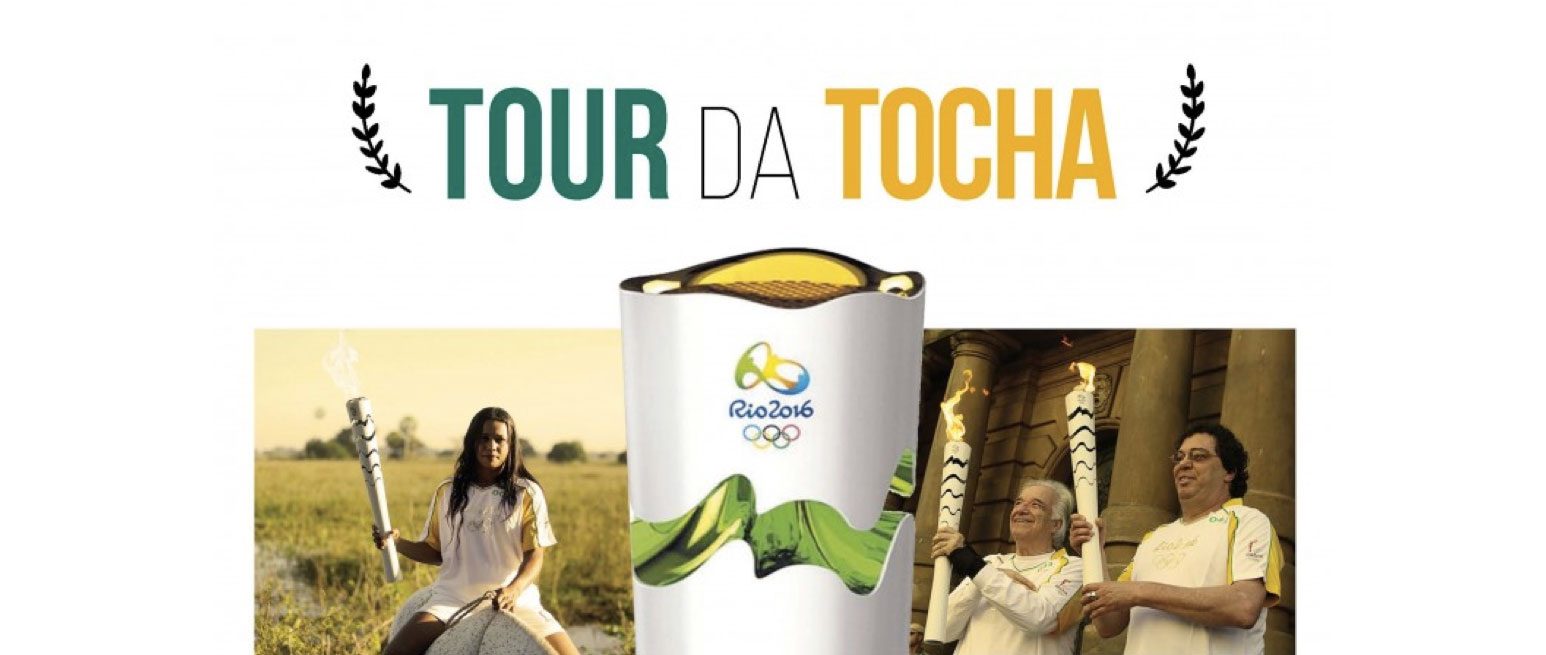Olympic Torch Relay
Context
By the time the Olympic flame lit up the pyre of the 2016 Rio Games in the Maracanã stadium, there was already a long story behind the main Olympian symbol. After being lit in Olympia, Greece, on April 21, the Olympic torch went through 25 Greek, two Swiss and 300 Brazilian cities – from all the 26 states and Federal District – announcing the arrival of the greatest sports event in the world. In Brazil, it traveled over 10,000 km by land and 10,000 miles by air, with 12,000 torch bearers and an unprecedented mobilization.
In addition to being a major challenge for the FSB Comunicação/Ministry of Sports team, immortalizing the Olympic torch relay from Greece to Rio de Janeiro revealed another need. For the first time, an edition of the Olympic Games would be held in South America, and it was necessary to have a detailed record of each special moment experienced by Brazil as the host of another mega sports event. Furthermore, #tourdatocha (#torchrelay) would be an opportunity for the Ministry of Sports to establish itself as the definitive source of information for the Olympics, for directing the world’s spotlight to the initiatives of the federal government and demonstrating that the investments made would result in a national legacy.
Scenario
Even seven years after having been selected as the host for the Olympic Games, Brazil did not have the full trust of the press and a portion of the population to organize a mega sports event, despite the tremendous enthusiasm manifested by most of the cities along the torch’s route. In the political sphere, the impeachment process of Dilma Rousseff caused uncertainty about the possible effects of this on the finalization of the preparations for the 2016 Rio Games. On top of this was the acute economic crisis. The situation, reported daily by the press, also included protests and demonstrations in certain cities along the torch’s route.
To address this scenario, measures were discussed in meetings of the FSB Comunicação team, in dialogue with the Secretariat of Social Communication, of the Presidency of the Republic, and the Special Security Department for Major Events, of the Ministry of Justice. The social networks were constantly monitored for possible protests. Despite some incidents in a few cities, the work planned by the Ministry of Sports was not affected in any way.
Objectives
Coverage of the torch relay, planned by FSB Comunicação for the Ministry of Sports, had the following objectives:
- Publicize the nationalization of the 2016 Rio Olympic and Paralympic Games, promoted by the Olympic torch relay across Brazil;
- Disseminate the values symbolized by the Olympic flame, such as peace, unity and respect among peoples, as well as the history of its origin;
- Create an historical archive of the first edition of the Olympic Games held in Brazil;
- Increase engagement with the Brazil 2016 social networking websites;
- Consolidate the Brazil 2016 portal as the reference point for Olympic and Paralympic information;
- Publicize the public policies of the Ministry of Sports.
Challenges
- Overcome the scenario of political and economic crisis, as well as the threat of demonstrations, and consolidate the message, through the torch relay route, that the Olympic Games would benefit the country;
- Reinforce the opening announcement of the 2016 Rio Grams, highlighting the values represented the Olympic flame;
- Expand the influence of the social networks of the federal government on subject of the Olympic Games, despite obstacles faced during the torch relay.
- Amid the many national and international, public and private media outlets, make the Brazil 2016 portal the primary source of information for the 2016 Rio Games.
Results
Brazil Portal 2016
During the 107 days of the torch relay in Greece and Brazil, over 200 articles were produced by the FSB Comunicação team and published on the Brazil 2016 and Ministry of Sports portals. Brazil 2016, the official website of the Federal Government, had more than 5.6 million page views during the period of the relay, with a flow of new visitors of 76% and readings registered from over 200 countries.
Social networking websites
Throughout the relay, the Brazil 2016 profiles were the most influential in the country, becoming a source of information for Internet users and media outlets. The Brazil 2016 Twitter appeared in the interactive coverage of GloboEsporte.com and El País (Spain) during the entire route of the Olympic Flame.
The theme “Torch Relay” was monitored on the social networking websites between May 3 and August 5, 2016. In the period analyzed, 113,640,761 (113 million) profiles were potentially reached, totaling 103,893 interactions. There was a high level of activity on May 3, the starting date of the torch relay in Brasilia, which registered the greatest peak of interactions in the 95 days of analysis. The material produced by the FSB Communication/Ministry of Sports team in Greece was used by the national press.










